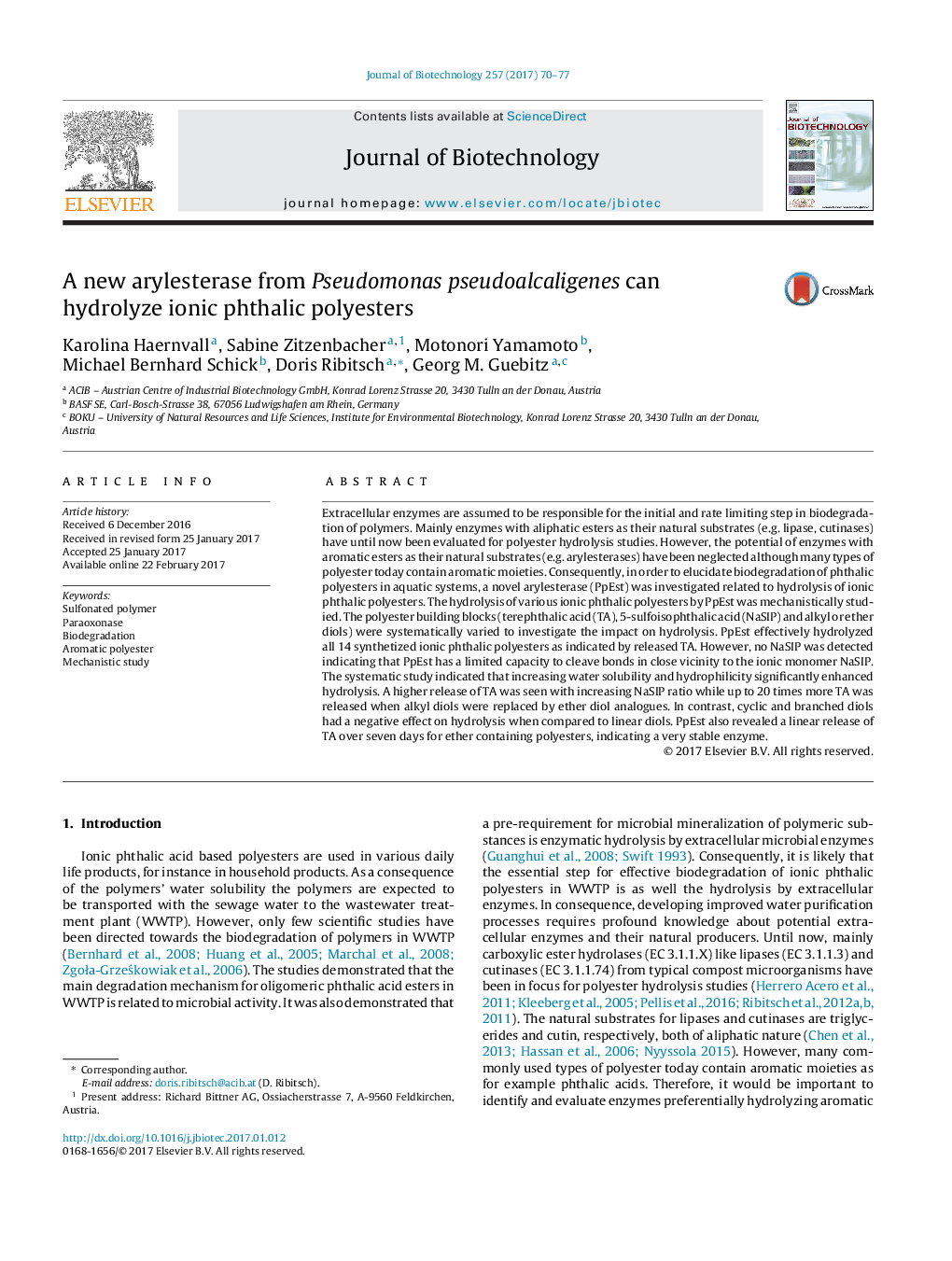| کد مقاله | کد نشریه | سال انتشار | مقاله انگلیسی | نسخه تمام متن |
|---|---|---|---|---|
| 6451893 | 1416986 | 2017 | 8 صفحه PDF | دانلود رایگان |

- First demonstration of an arylesterase to effectively hydrolyze aromatic polyesters.
- First mechanistic hydrolysis study of various aromatic polyester by an arylesterase.
- Impact of structurally varying ionic aromatic polyester on hydrolysis.
- Better knowledge about extracellular arylesterase from Pseudomonas pseudoalcaligenes.
- Improved mechanistic understanding of ionic polyesters biodegradation in WWTP.
Extracellular enzymes are assumed to be responsible for the initial and rate limiting step in biodegradation of polymers. Mainly enzymes with aliphatic esters as their natural substrates (e.g. lipase, cutinases) have until now been evaluated for polyester hydrolysis studies. However, the potential of enzymes with aromatic esters as their natural substrates (e.g. arylesterases) have been neglected although many types of polyester today contain aromatic moieties. Consequently, in order to elucidate biodegradation of phthalic polyesters in aquatic systems, a novel arylesterase (PpEst) was investigated related to hydrolysis of ionic phthalic polyesters. The hydrolysis of various ionic phthalic polyesters by PpEst was mechanistically studied. The polyester building blocks (terephthalic acid (TA), 5-sulfoisophthalic acid (NaSIP) and alkyl or ether diols) were systematically varied to investigate the impact on hydrolysis. PpEst effectively hydrolyzed all 14 synthetized ionic phthalic polyesters as indicated by released TA. However, no NaSIP was detected indicating that PpEst has a limited capacity to cleave bonds in close vicinity to the ionic monomer NaSIP. The systematic study indicated that increasing water solubility and hydrophilicity significantly enhanced hydrolysis. A higher release of TA was seen with increasing NaSIP ratio while up to 20 times more TA was released when alkyl diols were replaced by ether diol analogues. In contrast, cyclic and branched diols had a negative effect on hydrolysis when compared to linear diols. PpEst also revealed a linear release of TA over seven days for ether containing polyesters, indicating a very stable enzyme.
109
Journal: Journal of Biotechnology - Volume 257, 10 September 2017, Pages 70-77